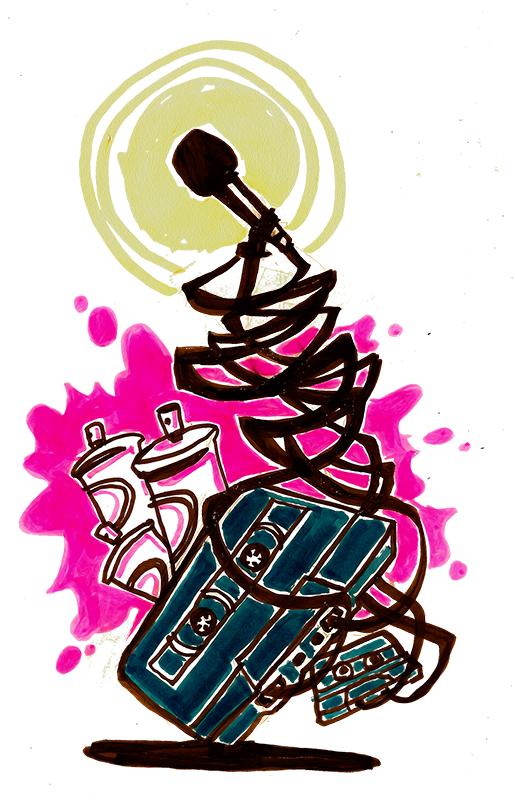Scratching the surface of hip-hop history
November 20, 2014
Hip-hop has a short, but rich and lively history with much still to be discovered. Current and former hip-hop journalists Eric Arnold, Adisa Banjoko and Brian Coleman came together last Thursday for a discussion panel about that history after the recent publication of Coleman’s book on some of the most influential albums in the genre.
Arnold moderated the discussion with Coleman, who published a book last month through Wax Facts Press about the history of hip-hop albums that were lacking liner notes, “Check the Technique Volume 2: More Liner Notes for Hip-Hop Junkies.” The first volume was released in 2007.
“There is still so much undocumented about hip-hop and right now I’m just talking about rap, we’re not even talking about graffiti, B-boying,” said Banjoko, who hosted the panel at the headquarters of the Hip Hop Chess Federation in Fremont. HHCF is a Bay Area nonprofit organization, founded by Banjoko, that helps at-risk youth through chess, hip-hop and jiu jitsu.
One of the biggest aesthetic transitions that took place in hip-hop was the transition from cassettes and vinyl to MP3s.
“Cassettes were very personal,” Banjoko said.
A part of what made cassettes personal was the liner notes that were included in them, which included information ranging from lyrics and essays to a list of people who were involved in the production process.
“Knowing more about what goes into making an album can never make you enjoy it less,” Coleman said. “It can only enhance the experience.”
Coleman’s book goes into the history of what went into the production of albums such as Ice Cube’s “AmeriKKKa’s Most Wanted,” complete with photos and interviews from the artists themselves.
He also discusses the transitions that took place in hip-hop over the years, including how legal issues prevented artists from being able to sample, which was a big part of the aesthetic of that time.
But the 80s and early 90s are considered the golden age of hip-hop because there was no defining sound. Coleman said this was because artists weren’t allowed to bite and the resulting competition forced everyone to be innovative.
“You could not copy anyone, you could not sound like anyone,” Coleman said, “you would literally be laughed out of the scene.”
Since artists had to be original, hip-hop encompassed a wide variety of sounds, ranging from Public Enemy to Biz Markie. Anything could be hip-hop as long as it was original.
As major labels and the industry became a bigger part of hip-hop, artists’ reputations began to depend more on how many albums they sold rather than how original they were.
“It’s not all a bad thing, but I think there is a reason it was the golden age,” Coleman said. “It was a more innocent time artistically in that everyone was just competing to be the best.”
As it got bigger, the community and the scene artists were from became less important, Coleman said.
During the golden age, everyone was participating in the scene at some level, whether they were doing graffiti or rapping.
“There was always this element of participation,” Banjoko said. “Now it’s not like that; these kids just want to get rich quick.”
Banjoko, who is now a father, said “hip-hop is always youth culture at it’s finest and at it’s worst,” so he no longer has ownership over it. He said he actually enjoys a lot of hip-hop today, which borrows elements of classic hip-hop.
But he said the lack of research into what went into the music and where those elements came from has “cut the generations apart.”
Coleman stressed that “a lot of hip-hop has always sucked,” citing artists such as Vanilla Ice and Milli Vanilli from the golden era.
The main difference between the golden age and today is the quantity of good records coming out every year, which went from between 15 to 25 good albums a year to about five.

